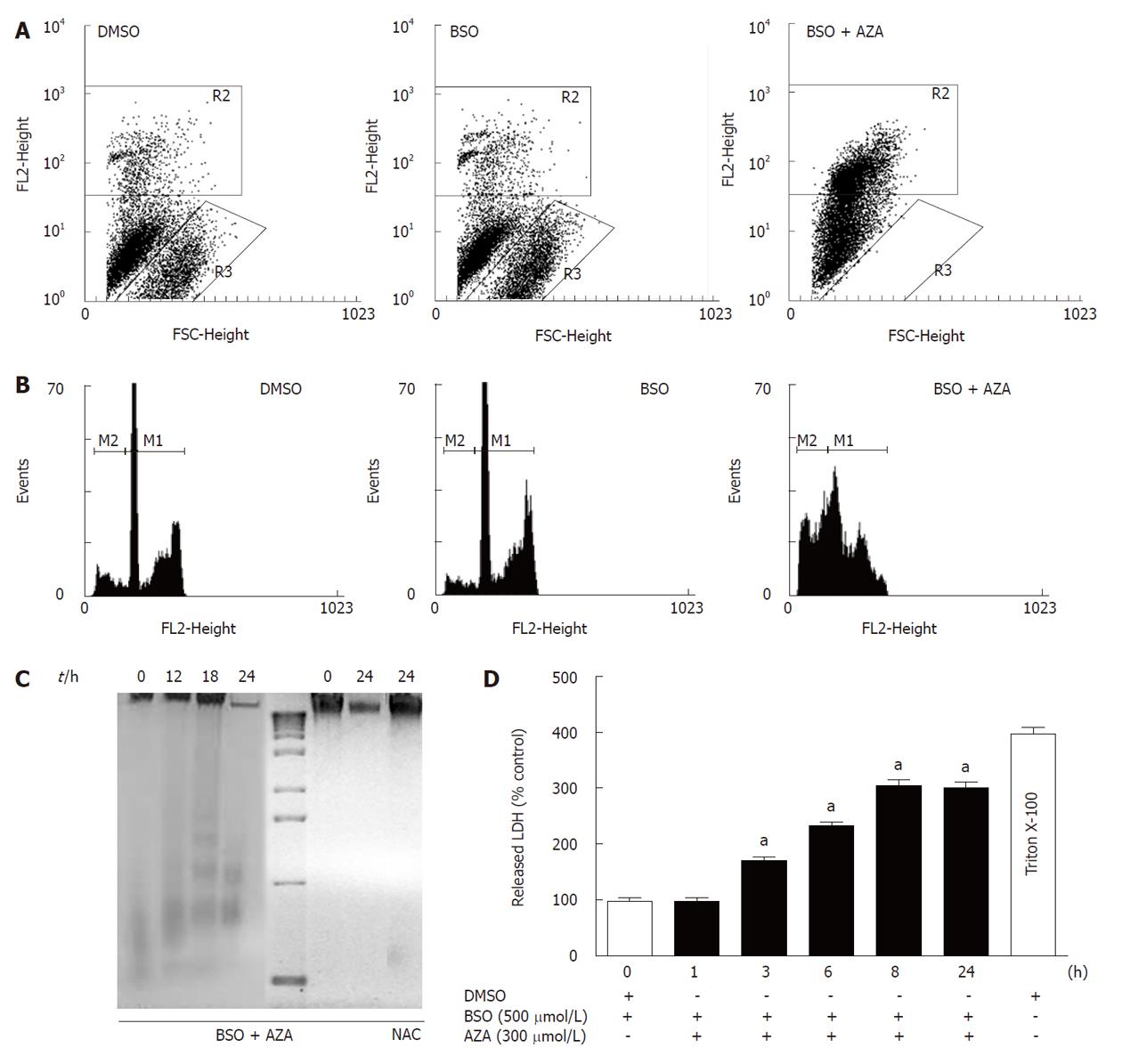Copyright
©2011 Baishideng Publishing Group Co.
World J Gastroenterol. Sep 14, 2011; 17(34): 3899-3911
Published online Sep 14, 2011. doi: 10.3748/wjg.v17.i34.3899
Published online Sep 14, 2011. doi: 10.3748/wjg.v17.i34.3899
Figure 3 Effect of azathioprine plus buthionine sulfoximine treatment on cell viability, DNA fragmentation and lactate dehydrogenase release.
A: Cell viability of HepG2 cells treated with dimethyl sulfoxide (DMSO) (24 h), buthionine sulfoximine (BSO) (500 μmol/L, 24 h) or pretreated with BSO (500 μmol/L, 24 h) and then cotreated with azathioprine (AZA) (300 μmol/L, 24 h); B: Study of cell cycle of HepG2 cells treated in the same conditions; C: DNA fragmentation of HepG2 cells pretreated with BSO (500 μmol/L, 24 h) and then cotreated with AZA (300 μmol/L) at different times with or without N-acetylcysteine (NAC) (1.5 mmol/L); D: Time course of lactate dehydrogenase (LDH) released by HepG2 cells pretreated with BSO (24 h) and then cotreated with AZA at different times. Triton X-100 (0.2%) used as control. Significant differences with respect to control (DMSO plus BSO) were statistically analyzed by analysis of variance with the Bonferroni post hoc test. aP < 0.001.
- Citation: Hernández-Breijo B, Monserrat J, Ramírez-Rubio S, Cuevas EP, Vara D, Díaz-Laviada I, Fernández-Moreno MD, Román ID, Gisbert JP, Guijarro LG. Preclinical evaluation of azathioprine plus buthionine sulfoximine in the treatment of human hepatocarcinoma and colon carcinoma. World J Gastroenterol 2011; 17(34): 3899-3911
- URL: https://www.wjgnet.com/1007-9327/full/v17/i34/3899.htm
- DOI: https://dx.doi.org/10.3748/wjg.v17.i34.3899









